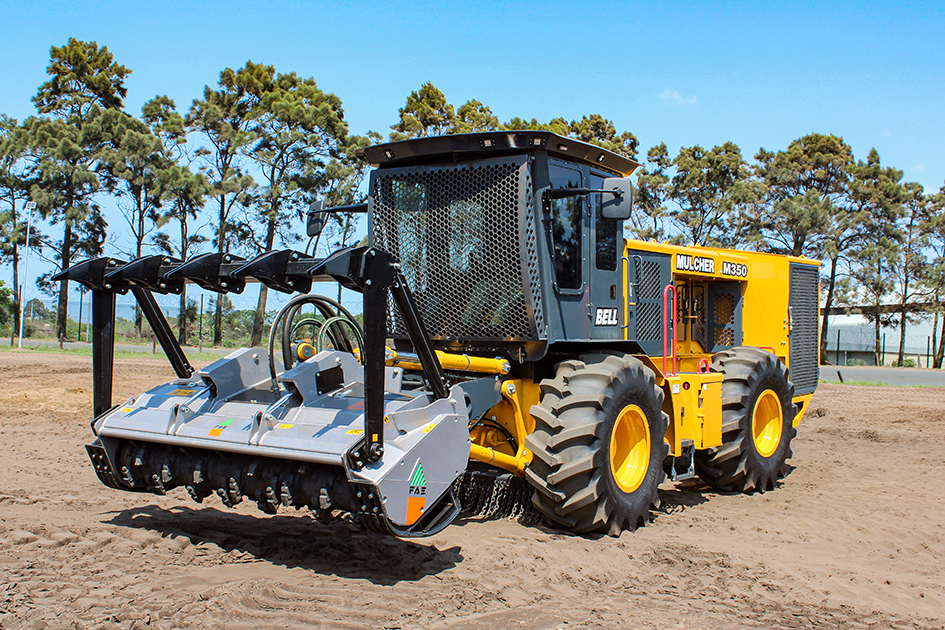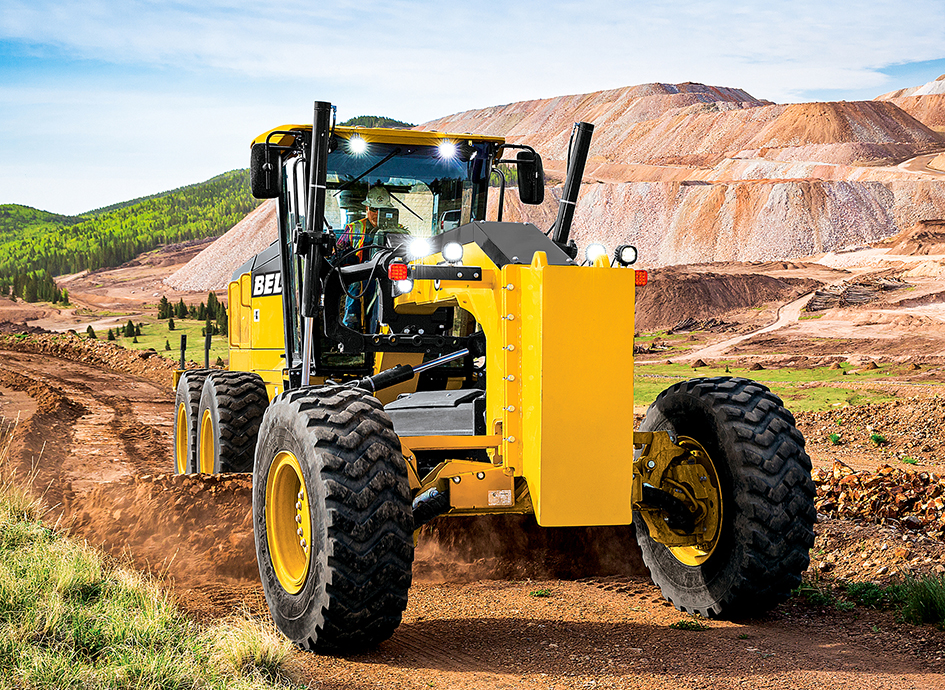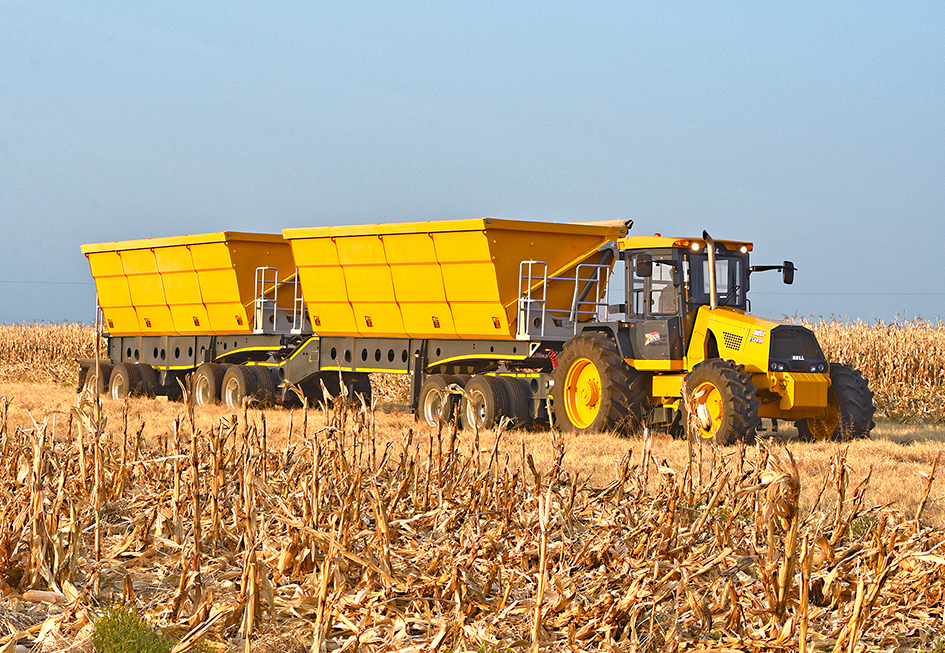Bell Equipment develops a mulcher for South African conditions
Published: 05 March 2020
Bell Equipment will showcase the best of local at NAMPO 2020 displaying a Bell 315SL TLB, a modified Bell Haulage Tractor with tandem Afrit side-tipping trailers for the maize industry, the new, more economical Bell 620G Grader as well as a selection of Kobelco Excavators and Bomag compaction equipment.
Visitors to the Bell stand, C21, will also be able to learn about the company’s latest product, the Bell M350 Mulcher, a niche solution developed with customers from the local forestry industry.
According to Bell Equipment’s Chief Engineer: Agricultural and Alliance Products, Ian Kramer, the machine is in response to foresters moving away from the slash and burn practice of land clearing in favour of mulching as a more environmentally responsible method of removing biomass. There are tangible business benefits to mulching; it reduces the time between harvesting and replanting while the mulch provides nutrients for the young trees. “We were approached by some of our customers who have tried traditional mulchers developed for the wetter climates of Europe and North America. These units typically don’t cope well with our harsh, dry conditions, where the combination of wood fibre and dust tends to clog up the cooling pack causing overheating, so we were asked to develop a solution better suited to local applications.”
“Working with our customers, we adapted the mulcher for our conditions by repositioning the cooling pack at the back of the machine, incorporating screening to keep the debris out and fitting a filtration system to filter out the dust and prevent it from reaching the cooling pack. We have demonstrated that our machine can operate in ambient temperatures of 45° Celsius as it worked in the Kwambonambi area of northern KwaZulu-Natal in the middle of summer where temperatures often peaked over this, with no incidents of overheating.”
Like traditional mulchers, the cab is enclosed and filtered via the air conditioner to keep the workspace dust-free. The cab is mounted further forward for better visibility of the head, similar to a combine harvester. Bell opted for a FAE head from Italy as they are one of the most prominent manufacturers, preferred by customers, and spares are readily available in the country.
Ian continues: “The Bell M350 generates 261kW of power. During the design phase we interacted with customers and looked at competitor machines and found that these machines were fitted with larger mulching heads that required more power. However, the heads weren’t being supplied with the full power requirement so the performance wasn’t as good as it could be. We have used a slightly smaller head so that we could give the head the full power that the head manufacturer requires. By allowing the head to run at more optimal performance levels, our machine is more effective at mulching.”
Another important design consideration was the width of the machine. Imported units are about 2,8m wide and have to be transported as an abnormal load, requiring special load permits and increased transport costs, but the width of the Bell M350 is less than 2,6m and can be transported on a normal low bed.
According to Ian, independent studies by a large forestry company have shown that, depending on the operating conditions, the Bell M350 delivers between 18% and 23% better fuel burn than competitor machines while productivity is on a par, at around 1,8 to 2,5 hectares a day.
“At a lower capital investment, this means that our machine has a lower total cost of ownership while providing a solution uniquely suited to local conditions and backed by Bell as the OEM,” he concludes.

Visitors to the Bell stand will be able to learn about the Bell M350 Mulcher, a niche solution developed with customers from the local forestry industry.

The new, more economical Bell 620G Grader will be on display at Bell Equipment’s stand, C21, at NAMPO 2020.

